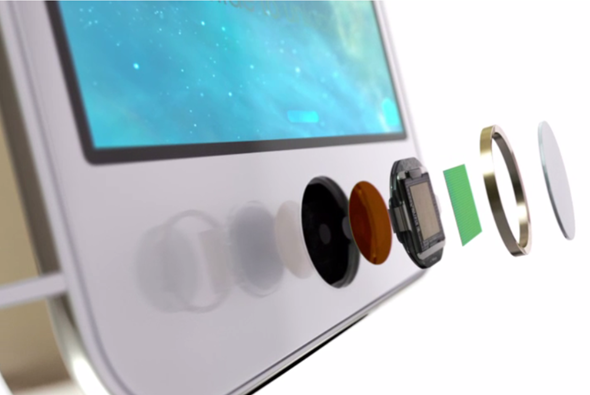The introduction of the iPhone 5s during the final quarter of 2013 marked a significant hardware change in the mobile industry. Not only was the 5s the first consumer facing smartphone to introduce 64-bit architecture with the A7 chipset, but it was also the first publicly available smartphone to implement fingerprint scanning technology thanks to Touch ID. It’s highly likely that biometric based detection and authentication will become increasingly popular over the next few years, with manufacturers coming up with their own unique uses. On the subject of biometrics, a new comparison video from Tanner Marsh gives a fairly comprehensive overview of fingerprint detection on what are arguably the market’s two most powerful smartphones: the iPhone 5s and Galaxy S5.
Apple put all of their initial cards on the table with the launch of the iPhone 5s last year. Samsung’s Galaxy S5 isn’t set to be launched until the back end of next week and will feature its’ own fingerprint scanning capabilities. Given that there is a considerable gap between launch dates, it should be safe to assume that Samsung has potentially overcome a lot of the obstacles that Apple may have faced and fixed a number of outstanding issues that Touch ID users come across. But is that the case? The comparison video looks at the whole process of detection, including setting up a fingerprint for use, interacting with the sensor and comparing features of each implementation.

The first thing that immediately becomes apparent is that Apple and Samsung have chosen to go in entirely different routes with how they have integrated and built the fingerprint scanning functionality. Apple’s iPhone 5s stays true to the form factor of the previous model by utilizing the existing Home button and embedding the Touch ID beneath it. Setting up a fingerprint on the 5s involves touching the Home button multiple times from different angles to capture each aspect of the print. Samsung’s method is entirely different with Marsh noting that the S5’s implementation makes it very difficult to use with just a single hand.

It will be extremely interesting to see the reaction to the Galaxy S5 after launch. Samsung has already announced their plans to offer APIs that provide developer access to the fingerprint technology on the device, but will it face the same security concerns that marred Apple’s Touch ID launch? It isn’t long until we find out.
You may also like to check out:
You can follow us on Twitter, add us to your circle on Google+ or like our Facebook page to keep yourself updated on all the latest from Microsoft, Google, Apple and the web.

